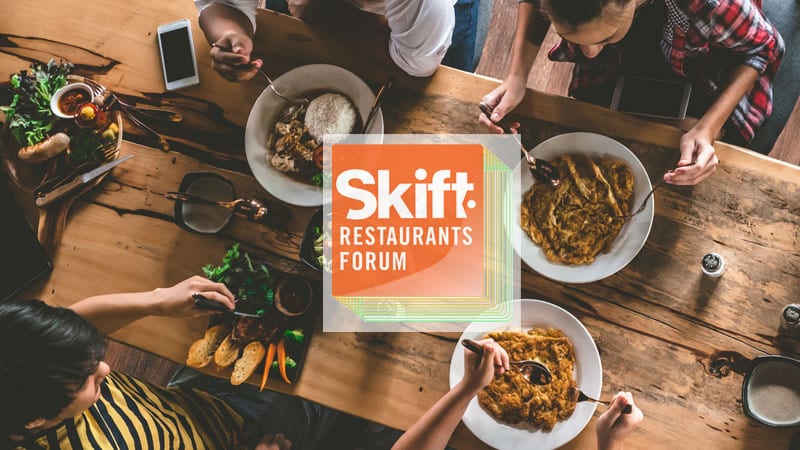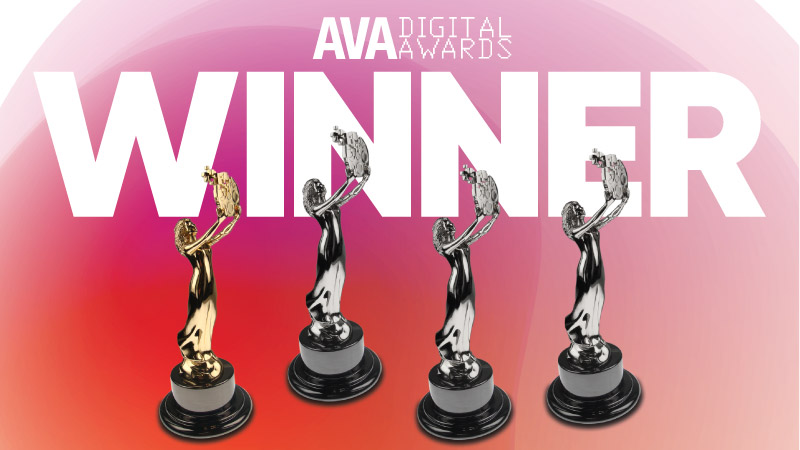Here are some takeaways from the Skift Table Conference about the future of the food and beverage industry.
Delivery & the Age of Meals
2018 was the final nail in the coffin and marked the death of cooking as we know it.
Global food and beverage markets are making the shift away from the canned, preserved and processed to fresh foods. This “age of the meal” is representative of our cultural move away from anything that ties us down—including grocery ingredients.
The swim lanes that once divided meals and food, restaurant and grocery, are quickly blurring into one open pool. Think back only a few years when the majority of space in grocery stores was dedicated to ingredients; now that same space is being revamped and assigned to prepared fresh foods and meals. Brands like Coca-Cola and Nestlé are getting into the mix, too: Recently the two have been buying up coffee shops and fast restaurants in an effort to enter the playing field.
Restaurants are becoming an active player in the business of “meal fulfilment” as consumers shift toward the broader idea of wanting something fresh immediately. Having a robust delivery service will be key in a restaurant’s ability to successfully navigate the de facto future of the food and beverage industry.
Traditionally, delivery was seen by restaurants as a source of additional revenue: a quick transaction with the consumer that required less overhead. It was an add-on to the restaurant experience, not a large part of it.
That is all about to change, DRASTICALLY: $200B of food sales will shift to digital ordering and delivery in the next four years.
Technology, Personalization & the Modern Restaurant
With competition comes innovation, and technology will be behind much of the innovation in the restaurant industry moving forward. Data is the next frontier, but restaurants need to better understand how to use it to improve the customer experience—they’re about 10 years behind retail and travel sectors. There is a wealth of information out there, but the struggle lies in centralizing and connecting the dots to better the experience for all parties involved.
Enter personalization, which data will be the driving force behind. Google and Instagram are at the top of the data food chain when it comes to this (pun intended). The two platforms are working together to create a personalized experience for the dining audience: Users figure out where to eat on Instagram and use Google Maps to find it (though with personalized recommendations making their way into the platform, they are now using Google Maps to find those, too).
On Instagram, people follow others who opinion they trust, and those people are sharing where and what they eat. It’s not only influencers who are making a huge impact, but family and friends even more so in what is essentially the new “word of mouth.”
This data is all out there for the taking, and it’s up to the restaurant industry to grab it by the horns. If there’s still any doubt as to why, let’s end that here:
- 85% of consumers are more likely to purchase a product or experience if it’s personalized
- 80% are more likely to do business with a company that offers a personalized experience
Personalization is no longer “nice”; it’s table stakes. Yet, while we all know this now, the food and beverage industry has made little progress when it comes to personalization through data.
As brands and the industry across the whole begin to reconcile the drive toward data, opportunities for improvement include:
- Discovery + Booking
- You can tell a lot about the guest by booking channel
- If they book through Instagram they will likely be more likely to take and post a photo of their food, so consider giving them a table with good light
- In-Service Experience
- Item order history, spend and number of visits gives waiters a means not only to recommend and upsell, but to better the experience for guests at large
- Augment by in-person insights collected in real time and added to a centralized CRM
- Guest Feedback
- Surveys and online reviews tied to reservation data for added meaning
- Loyalty + Retention
- Take the guesswork out of planning events and experiences, and use data to dictate what your audience is likely to be interested in
- Create targeted emails and ads instead of generalized blanket promos that don’t connect to the consumer
Personalization technology lives at an important intersection of dining and restaurants: It can put better restaurant recommendations in front of an audience and ultimately create more personal dining experiences, ergo enhanced connection, engagement and coveted brand loyalty.
Experiential Food
Design is a critical component for successful restaurants—people want an experience when they are eating. They want to feel connected to what they are eating in an immersive way. Restaurants have to think about the interactions people have and what the space can help facilitate as an immersive experience for your guests. This doesn’t stop with the real-life experience but has to be fluid across the digital one as well.
For example, with the proliferation of social media in the restaurant space, diners come in already knowing the menu and the dishes they want. This should come as no surprise, as photography (think Instagram) and food go hand in hand and the reason is an age-old one: People eat with their eyes. For restaurants, that means considering the online world when creating menus and designing plates for their guests. The key idea behind doing this successfully, however, is to focus on creating purpose and meaning that allows for the “Instagram moments” to happen, rather than forcibly fabricating them.

People care more about food then they ever have before; it’s no longer a necessity but a lifestyle. Food is the last experience that can’t be downloaded (just yet), and as such the center of consumer attention is happening in food spaces. It explains why major brands (from more expected Coca-Cola to perhaps, more inquisitively, Dolce & Gabbana) are trying to get into the culinary game: It provides the all-important human point of contact we are quickly losing.
Stories are ultimately what separates one food experience from the next. The restaurant space has become the vehicle for connection and making stories happen that eventually get shared out and promoted via social media. Having any experience, good or bad, is a story to tell, and having a story is more interesting than not having a story. Consumers are gravitating to this notion of storytelling with gusto.
The experience, and thus the story, is where each restaurant has the opportunity to stand out. The trick is getting people to engage with your restaurant and your story when everything is so saturated.
Conclusion
Ultimately, what is happening in the food and beverage industry is representative of larger trends taking hold across culture today. Consumers no longer want to be tied down, and they expect to fluidly interact across their real and digital lives. Technology will be a guiding force in the discovery of goods and services, with data and personalization making them unique to each end user and thus strengthening the relationship between the person and the brand. Transactional dining relationships will no longer be relevant. In a world where we are constantly connected but mostly alone, food is one of the few spaces where we can still come together.



